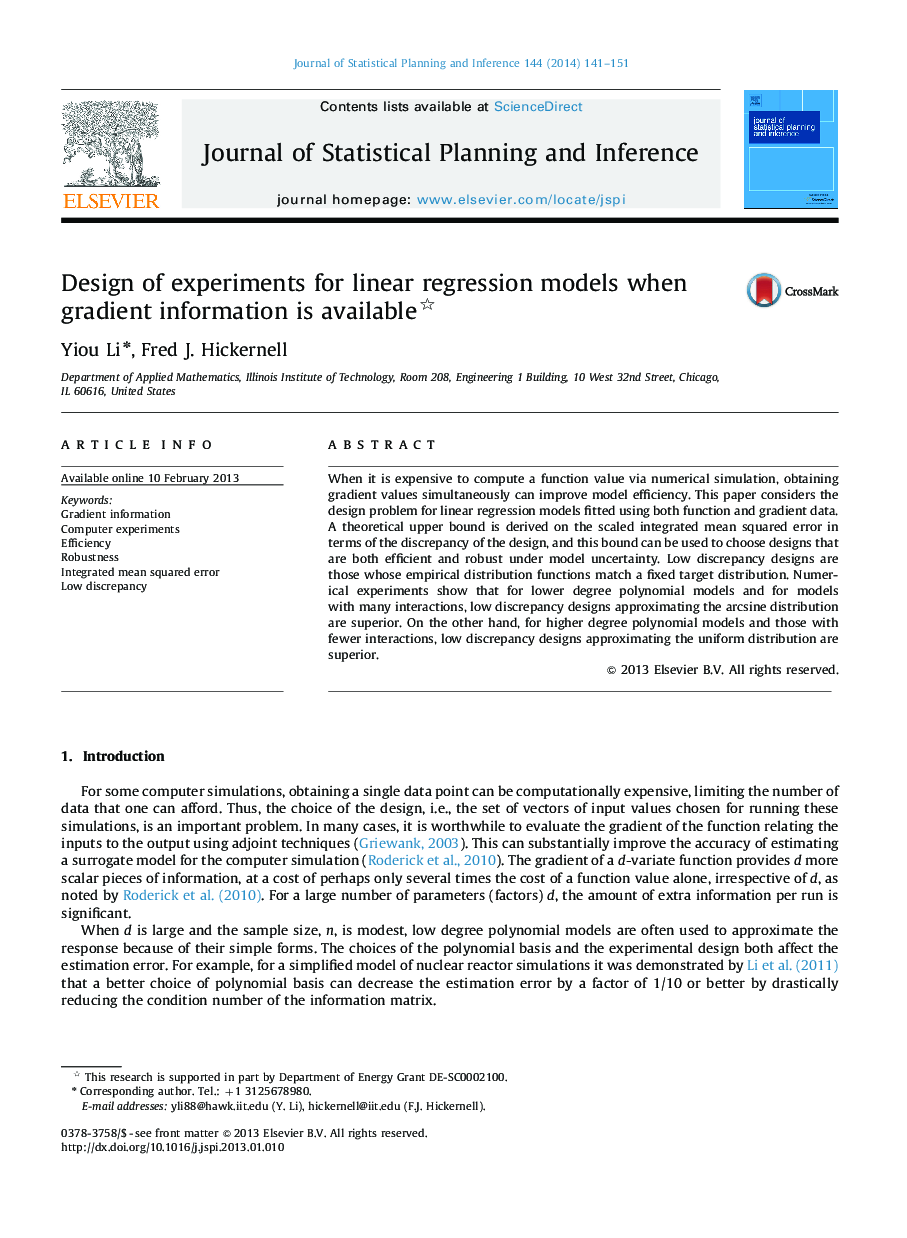| Article ID | Journal | Published Year | Pages | File Type |
|---|---|---|---|---|
| 1148613 | Journal of Statistical Planning and Inference | 2014 | 11 Pages |
When it is expensive to compute a function value via numerical simulation, obtaining gradient values simultaneously can improve model efficiency. This paper considers the design problem for linear regression models fitted using both function and gradient data. A theoretical upper bound is derived on the scaled integrated mean squared error in terms of the discrepancy of the design, and this bound can be used to choose designs that are both efficient and robust under model uncertainty. Low discrepancy designs are those whose empirical distribution functions match a fixed target distribution. Numerical experiments show that for lower degree polynomial models and for models with many interactions, low discrepancy designs approximating the arcsine distribution are superior. On the other hand, for higher degree polynomial models and those with fewer interactions, low discrepancy designs approximating the uniform distribution are superior.
